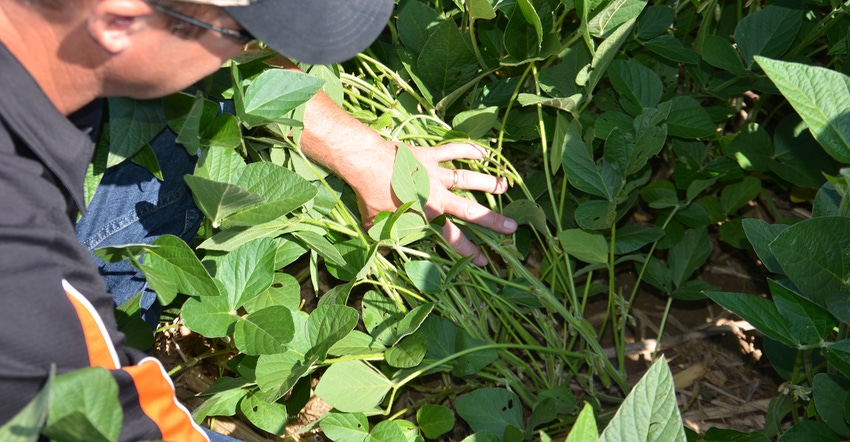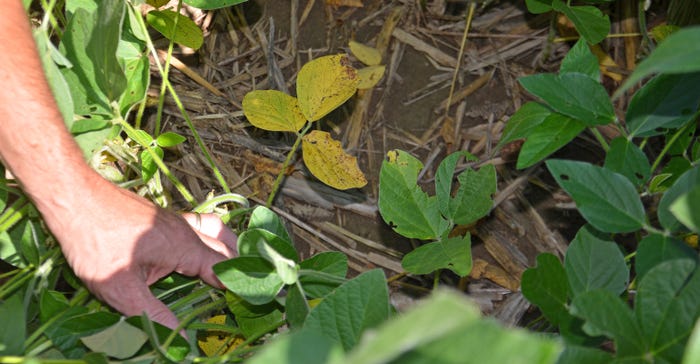
By this time of year, farmers and agronomists have a pretty good idea what corn yields will be like. You can determine the plant population and pull random ears, count rows of kernels and number of kernels per ear, apply a yield formula, and get within the ballpark on yield. The biggest determining factor may be size and depth of kernels.
Even getting within the stadium is a challenge if you’re estimating soybean yields, Steve Gauck says. That’s why so few people try to do it. There are formulas in books, but they’re tedious, and even if you follow them, estimates are often way off from final yields.
“What I like to do in late summer is pull back the canopy and look under it in several locations,” says Gauck, regional agronomy manager for Beck’s, based near Greensburg, Ind. “If you’re seeing lots of branching, if the nodes on the main stem are reasonably close together, and if there are consistently several pods per node, you know that yield prospects are heading in the right direction.”
That doesn’t mean yields are in the bag, however. “Soybean yields with modern varieties aren’t fully determined until we get near maturity,” he says. “Weather late in the season can make a huge difference in whether soybean plants add those last few bushels per acre or not.”
When Gauck pulls back the canopy where the stand is perhaps not as thick as in other places, he’s often surprised by what he finds. “When soybean plants have more room, they put out branches early on,” he says. “If you have extra branches which pod well, that adds to yield. It’s another factor that makes it tough to guess soybean yields ahead of harvest.”
Early yellow leaves
If you pull back the canopy in early August, when soybeans are still developing pods, and you find yellow leaves near the base of the plant, is that a problem?
“You would rather see green leaves, but when the canopy is thick and bottom leaves don’t receive sunlight, it’s not unusual to find a few yellow leaves toward the lower part of the plant,” Gauck explains. “As long as you’ve got plenty of intact foliage in the upper part of the plant, I wouldn’t worry about it.”

YELLOW LEAVES INCONSEQUENTIAL: Steve Gauck found a few yellow leaves low under the canopy in this field, but determined they weren’t likely to impact yield.

When Gauck looks a little deeper is when he finds yellow leaves with brownish spots inside the canopy. “There are some diseases that come in and can cause yellowing with brown spots.
“Again, most of the time, these diseases don’t become a big issue. It’s good to note they’re out there and to monitor it, but they usually don’t affect a large part of the plant and don’t spread enough to cause significant yield impact.”
About the Author(s)
You May Also Like




